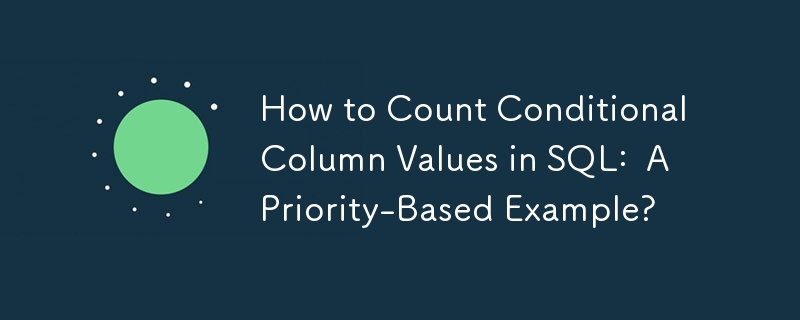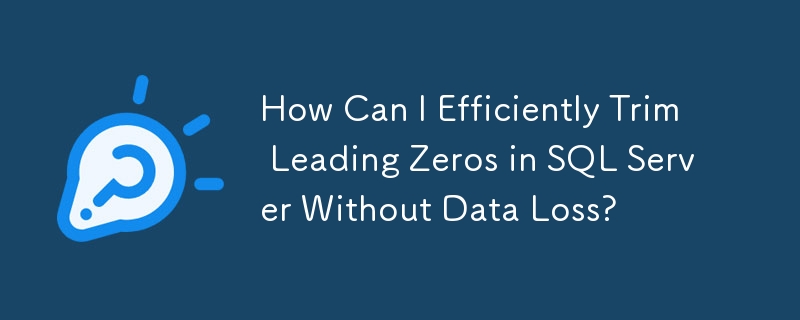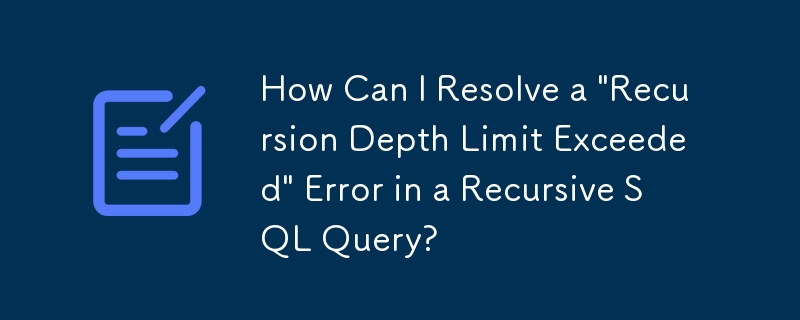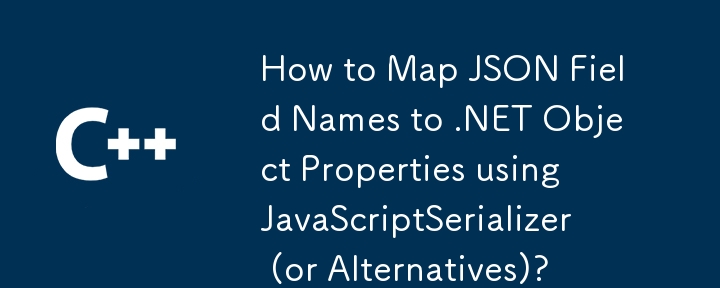Found a total of 10000 related content
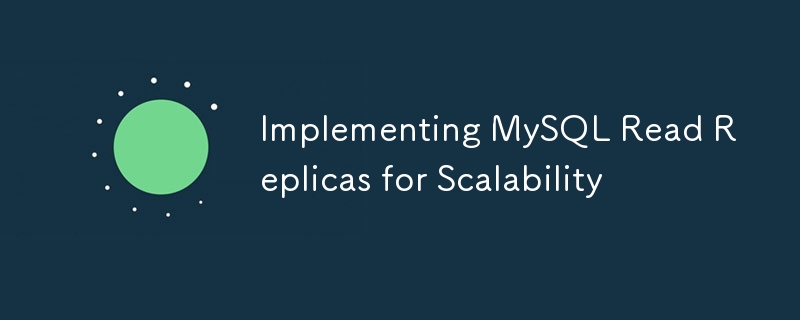
Implementing MySQL Read Replicas for Scalability
Article Introduction:MySQL read replica is a read-only instance created through the master-slave replication mechanism, which is used to share the pressure of master library query. The settings steps include: configuring the main library to enable binlog and create a copy account; configuring the slave library to set server-id and start the copy process; verifying the status and monitoring delays and errors regularly. The application layer can utilize read replicas through manual shunt, connection pooling, middleware proxy, or DNS polling. When using it, you need to pay attention to data consistency, connection limit, index optimization and lack of monitoring.
2025-07-18
comment 0
635

PHP serial communication read timeout mechanism: Solving blocking problems and implementation methods
Article Introduction:This tutorial discusses in detail the blocking problem that the read method may cause when using the lepiaf\\SerialPort library for serial communication in PHP. By analyzing the internal implementation of the library, we found that even in non-blocking mode, the read method still waits for the delimiter infinitely. The article provides a solution to modify the library source code to introduce a timeout mechanism and guides how to handle serial port read timeout gracefully at the application layer to ensure system stability.
2025-08-23
comment 0
490

Speeding up Existing Apps with a Redis Cache
Article Introduction:Redis accelerates existing applications: cache queries to reduce server load
Core points:
Redis effectively accelerates existing applications by caching query results, thereby reducing server stress. It stores query results for a specified time (for example, 24 hours), and then reuses these results, significantly improving application speed.
The installation of Redis can be done through the operating system package manager or manually. The installation process includes avoiding common warnings and ensuring that Redis starts automatically after the server restarts.
The Predis library works with Redis to provide a memory cache layer for applications. This process involves checking whether the results of the current query exist in the cache, if not, get the result and transfer it
2025-02-17
comment 0
445

Combining SQL joins and external APIs to implement type and distance-based data filtering
Article Introduction:This article explores how to efficiently retrieve associated data through SQL multi-table joins and combines external APIs such as Google Distance Matrix API to solve complex business logic that is difficult to directly handle within a database, such as geographic distance-based filtering. The tutorial details the application of SQL INNER JOIN and FIND_IN_SET functions, as well as the strategy of integrating external services in the application layer (PHP) for subsequent data processing, aiming to help developers build more flexible and powerful data query solutions.
2025-08-16
comment 0
543

Integration of SQL multi-table joint query and external API data: Building a job screening system based on transaction type and geographical distance
Article Introduction:This article details how to use SQL's INNER JOIN statement to jointly query multiple tables to realize the job filtering function based on transaction type and geographical distance. By combining the FIND_IN_SET function to process multi-valued fields and demonstrate how to calculate and filter distances at the PHP application layer by calling external geocoding APIs such as Google Distance Matrix APIs, to build an efficient and fully functional job matching system. The article also provides critical code examples and performance optimization suggestions to help developers build complex business query logic.
2025-08-16
comment 0
863

MySQL Database Schema Design Best Practices for Scalability
Article Introduction:Database design is crucial to system expansion, and a reasonable structure can reduce the cost of reconstruction. 1. Weigh standardization and anti-standardization. For core tables with high read and write ratios, moderately anti-standardization, such as order table redundant user_name, low-frequency update data can be fully standardized. 2. It is recommended to use self-increment integers for primary keys. The index follows the principle of leftmost prefix and analyzes the slow query log regularly. 3. Table structure reserves extensions, such as status fields, independent state tables, and JSON extended field tables. 4. Plan the shard key before dividing the library and table. Usually, select the user ID and generate the primary key in a unified manner to avoid cross-slicing transactions. Query aggregation is processed by the application layer.
2025-07-26
comment 0
740

Contributing to Open Source: Gatekeeper Case Study
Article Introduction:Contributing to open source projects: A practical case
This article will use a practical case to explain in detail how to contribute code to open source projects. We will take the GateKeeper library as an example to add a counting function and gradually demonstrate the entire process, including communication with the project owner, code implementation, testing, and submitting Pull Request.
Introduction to GateKeeper Library
GateKeeper is a PHP library for user registration, authentication, and authorization. It uses its own database to store and query user records. This makes it completely decoupled from the main application, making it easy to scale and modify.
Add counting function
At present, if GateKeeper wants to obtain the total number of users in the database, it needs to obtain all users first
2025-02-15
comment 0
412

Jumping from PHP to Go: Blasphemy, Bravado or Common Sense?
Article Introduction:Core points
Migrating the underlying Laravel application of Boxzilla applications from PHP to Go ends up with a more efficient program with better performance, easier deployment and higher test coverage, despite initial concerns about potential business risks.
Go is a compiled language with a standard library that is better than PHP, and can generate faster, smaller applications with fewer lines of code even if external dependencies are considered. The conversion from PHP to Go needs to adapt to new syntax and features, but the end result is considered worthwhile.
Despite PHP's larger community and rich resources, Go's growing popularity, ease of use, and excellent performance features make it a strong contender for developers to consider conversions. The author predicts that the future will be
2025-02-10
comment 0
497

Introduction to Java Native Interface (JNI) Use Cases
Article Introduction:Common usage scenarios for JNI include improving the execution efficiency of performance-sensitive parts, accessing operating system or hardware-specific features, reusing existing local library resources, and enhancing security and anti-reverse protection. 1. For high-performance tasks such as image processing, encryption and decryption, C/C can be used to implement key logic through JNI to improve efficiency, but attention should be paid to cross-language call overhead; 2. When accessing device drivers, sensor data or system APIs is required, it can be implemented with the help of the JNI call platform related local libraries, and compatibility issues should be considered; 3. In order to reuse existing C/C code assets, it can be encapsulated through JNI for Java application calls to reduce duplicate development, but a reasonable interface should be designed; 4. Placing the key logic at the native layer can increase the reverse difficulty
2025-07-04
comment 0
417
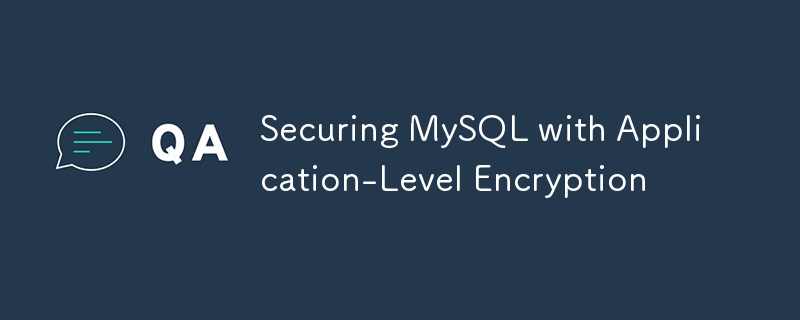
Securing MySQL with Application-Level Encryption
Article Introduction:The application layer encrypting MySQL data is an effective way to enhance data security. The core reason is that even if the database permissions are strictly controlled and SSL connections are used, MySQL may still become a security weakness. For example, database administrators can view the original data or drag the library to cause plain text leakage, and some cloud services do not support full encryption. Priority should be given to encrypting user-sensitive information, payment information and personal privacy content, but encrypted data cannot usually be used directly for querying. The implementation steps include: generating a key, encrypting data, storing encrypted data, and decrypting data. Notes include: The key should not be hard-coded. It is recommended to use environment variables or key management services. The encryption field should be of BLOB or TEXT type, and index needs should be considered. Limitations include: performance overhead, query limit, and key management
2025-07-27
comment 0
900
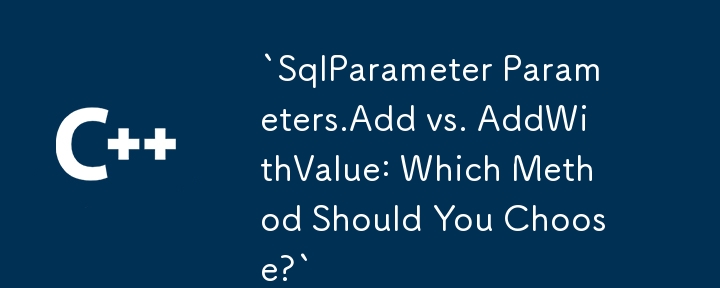

Dave The Diver: How To Catch Spider Crabs
Article Introduction:In Dave The Diver, there are some creatures that are not easy to catch. Or, catch alive that is. The spider crab is one of those very species, making it seem like the only way to bring these crustaceans back up to land is to viciously crack them up w
2025-01-10
comment 0
903

Prepare for Interview Like a Pro with Interview Questions CLI
Article Introduction:Prepare for Interview Like a Pro with Interview Questions CLI
What is the Interview Questions CLI?
The Interview Questions CLI is a command-line tool designed for JavaScript learners and developers who want to enhance their interview
2025-01-10
comment 0
1518
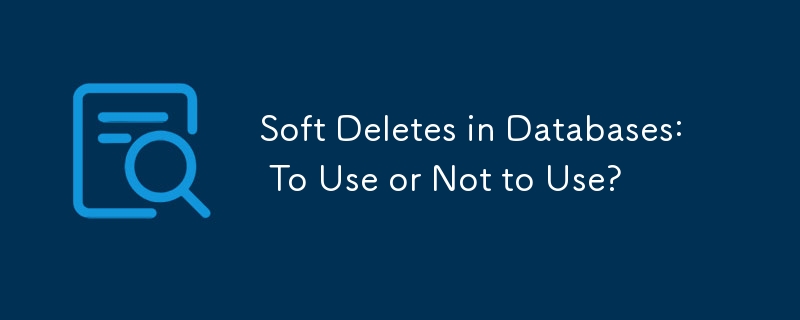
Soft Deletes in Databases: To Use or Not to Use?
Article Introduction:Soft Deletes: A Question of DesignThe topic of soft deletes, a mechanism that "flags" records as deleted instead of physically removing them, has...
2025-01-10
comment 0
1115











